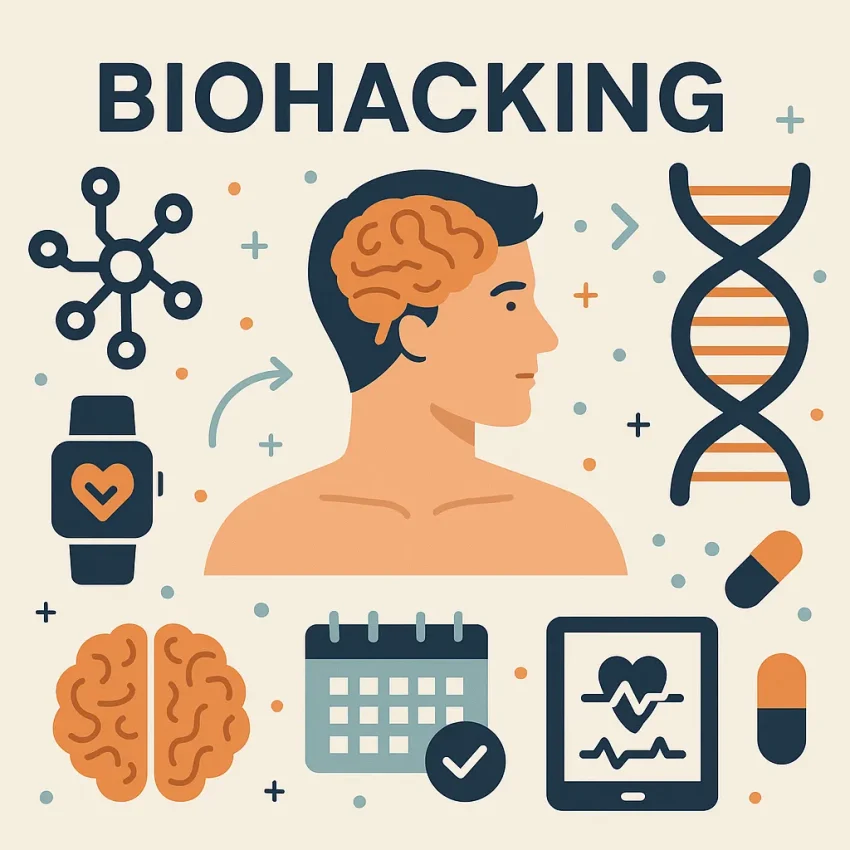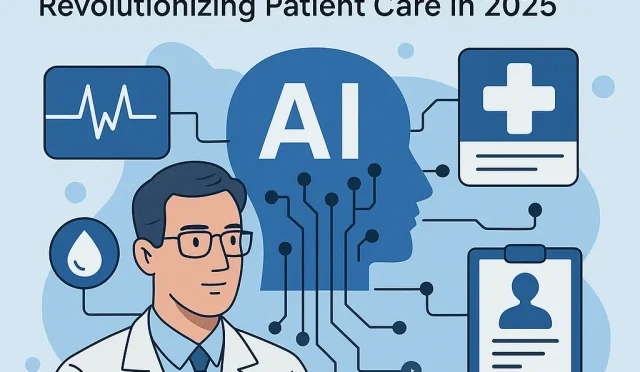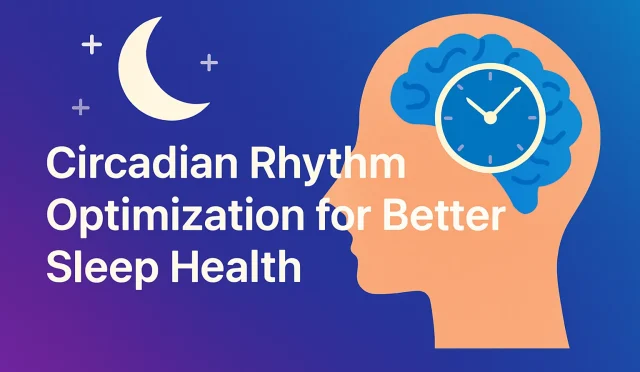The Rise of Biohacking: Optimizing Human Performance Beyond Nutrition
The rise of biohacking marks a fundamental shift in how individuals approach health, performance, and longevity. No longer satisfied with general wellness advice, a growing number of people are actively experimenting with their biology to enhance cognitive abilities, physical endurance, emotional stability, and overall vitality. Biohacking has evolved from niche curiosity to a global movement, encompassing a wide array of practices that go far beyond basic nutrition.
Biohacking human performance involves leveraging biology, technology, and self-experimentation to achieve measurable improvements in bodily and mental functions. Unlike traditional health methods that often take a one-size-fits-all approach, biohacking is inherently personalized. Individuals gather real-time data from their bodies—through wearables, blood tests, or genetic analysis—and use this information to fine-tune every aspect of their performance.
While early versions of biohacking were heavily centered on diet optimization—such as ketogenic, paleo, or intermittent fasting protocols—modern biohackers are moving into much more advanced territory. Sleep optimization, cognitive enhancement, hormonal modulation, microbiome management, and even genetic engineering are becoming mainstream topics among those seeking the edge that conventional methods cannot deliver.
A central tenet of the rise of biohacking is self-quantification. Biohackers track key metrics like heart rate variability (HRV), blood glucose levels, cortisol fluctuations, sleep cycles, and brainwave patterns to identify opportunities for improvement. This data-driven approach allows for tailored interventions that target specific weaknesses or amplify strengths.
One of the most exciting areas of human optimization through biohacking is cognitive enhancement. Techniques such as nootropic supplementation, neurofeedback training, transcranial direct current stimulation (tDCS), and meditation technologies are helping individuals unlock greater focus, memory retention, creativity, and emotional intelligence. These methods provide non-pharmaceutical paths to achieving superior brain function without traditional medical intervention.
Physical performance is another frontier being revolutionized by biohacking. Athletes and fitness enthusiasts are using cold therapy, red light therapy, hyperbaric oxygen chambers, and mitochondrial enhancement strategies to accelerate recovery, increase stamina, and delay aging. Supplements targeting cellular health—such as NAD+ boosters—are growing in popularity for their perceived anti-aging benefits.
The rise of biohacking also embraces wearable technology. Devices like the Oura Ring, WHOOP Strap, and Levels CGM provide continuous feedback on bodily functions, allowing users to correlate behavior changes with physiological outcomes. Sleep tracking, stress response monitoring, and metabolic tracking are now accessible to anyone, democratizing advanced health optimization techniques.
Beyond gadgets, biohacking human biology includes lifestyle interventions that push the limits of what was once thought possible. Practices like extreme cold exposure through ice baths, strategic sauna use for cardiovascular conditioning, and controlled fasting for autophagy stimulation are not fringe activities anymore—they are backed by a growing body of scientific evidence.
The philosophy behind biohacking human performance is rooted in empowerment. Biohackers reject the idea that health is solely the domain of doctors and pharmaceutical companies. Instead, they view the human body as a complex, modifiable system that, with the right inputs, can achieve extraordinary results. This approach resonates strongly with individuals who seek autonomy over their health outcomes.
However, the rise of biohacking is not without risks. Not all techniques are equally vetted by rigorous clinical trials. Some biohacking strategies—especially those involving experimental supplements, unregulated genetic manipulation, or extreme physical stressors—can carry significant dangers if misapplied. Ethical concerns also arise around access, fairness, and the societal implications of human enhancement.
Despite these challenges, the momentum behind biohacking is undeniable. Forward-thinking corporations are integrating biohacking principles into corporate wellness programs. Professional sports teams are employing biohackers to gain competitive advantages. Educational institutions are studying the effects of neuroenhancement on learning outcomes. Even government agencies are exploring biohacking for defense and public health initiatives.
A prime example of biohacking success is Dave Asprey, founder of Bulletproof, who popularized the concept of “biohacking your biology for high performance.” Through dietary innovations like Bulletproof Coffee, as well as broader advocacy for quantified self-experimentation, Asprey helped launch biohacking into mainstream consciousness.
Another trailblazer is Dr. Rhonda Patrick, whose research into micronutrient optimization, cold stress adaptation, and genetic predispositions has provided invaluable insights into how everyday choices can dramatically influence healthspan and cognitive function.
Emerging technologies promise to accelerate the rise of biohacking even further. Advances in artificial intelligence will allow deeper, more personalized health analyses. CRISPR gene editing techniques may eventually enable precise genomic modifications for disease prevention or enhanced physical traits. Nanotechnology could deliver therapeutic agents directly to specific cells, optimizing treatments at an unprecedented scale.
As public interest in longevity grows, biohacking for life extension is rapidly gaining traction. Practices such as senolytics therapy (clearing aging cells), intermittent hypoxia training, and metabolic conditioning are being explored not just for immediate performance gains, but for the possibility of extending healthy lifespan by decades.
What sets modern biohacking apart is its focus on proactive optimization rather than reactive treatment. It flips the traditional healthcare model by emphasizing prevention, resilience, and human potential. This evolution aligns with broader societal shifts towards personalization, decentralization, and user-driven innovation.
The future of biohacking human performance will likely involve tighter integration between biology and technology. Biometric feedback will become more instantaneous. Personalized medicine will no longer be reserved for the wealthy elite. DIY biology kits, at-home lab testing, and open-source health communities will empower individuals to become scientists of their own bodies.
Those who embrace the rise of biohacking today position themselves at the forefront of a revolution that could redefine what it means to be healthy, capable, and thriving in the 21st century. Rather than settling for average, biohackers aim to unlock the extraordinary potential that lies dormant within all of us.
#️⃣ #biohacking #humanperformance #selfoptimization #longevity #healthoptimization #wearabletech #nootropics #neuroenhancement #cellularhealth #quantifiedself








